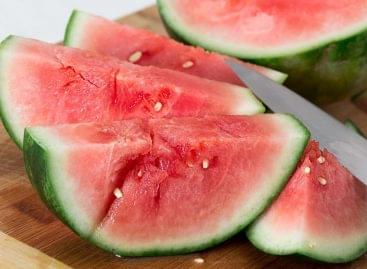Milk and dairy products are becoming more expensive: what is behind the price increase?
The price of milk and dairy products has increased significantly in recent months, which customers can already feel during their everyday shopping. The price increase can be observed not only domestically, but also at the European level, while the demand for dairy products has remained stable – the topic is analyzed by Világgazdaság.
Raw milk and export prices at record levels
 In October 2024, the purchase price of raw milk was 182.86 forints per kilogram, which is a 5.6 percent increase compared to the previous month and 17 percent higher than the prices of the same period last year. Export prices showed an even more significant increase: they increased to 226.6 forints per kilogram, which is 30 percent higher than the level a year earlier.
In October 2024, the purchase price of raw milk was 182.86 forints per kilogram, which is a 5.6 percent increase compared to the previous month and 17 percent higher than the prices of the same period last year. Export prices showed an even more significant increase: they increased to 226.6 forints per kilogram, which is 30 percent higher than the level a year earlier.
While the volume of exported milk decreased by 8 percent in October, an overall increase of 5 percent was registered in the first ten months of this year. This indicates that Hungarian milk is still in demand on the international market, which also explains the record high export prices.
Consumer price trends: what has increased the most?
- Consumer prices for dairy products are continuously increasing. In October, the most significant price increases can be observed for the following products:
- Trappist cheese: It has increased in price by 6 percent in a single month.
- Sour cream: Its price has increased by 5 percent.
- Fruit yogurt: The only dairy product for which a price decrease was registered.
Although milk market prices are still lower compared to January 2023, the increase in the autumn months is placing an increasing burden on households.
What is behind the price increase?
There are several factors behind the price increase:
- Increase in purchase prices: Domestic milk prices have increased significantly since August, and this has a direct impact on consumer prices.
- Export market effects: The increase in export prices, which already exceed domestic prices by 24 percent, is also putting pressure on the domestic market.
- EU trends: Prices in the EU27, which were stable at the beginning of the year, started to rise from July and by October were 13 percent higher than the level of the previous year. This trend also affects domestic prices.
- Cost increases: The costs of milk production and processing (e.g. energy, feed) have continued to increase, which producers and processors are forced to pass on to consumers.
Related news
KSH: industrial producer prices decreased by 0.7 percent in May 2025 compared to the previous month, and increased by an average of 6.9 percent compared to a year earlier
In May 2025, industrial producer prices were 6.9 percent higher…
Read more >Milk prices have risen, cottage cheese prices have fallen: the domestic dairy market is undergoing transformation
The price of domestic dairy products showed a significant annual…
Read more >Improving results despite declining sales: Alföldi Tej Kft. stabilizes after a difficult year
Alföldi Tej Kft. took a breather in 2024: although the…
Read more >Related news
Drought, technological competition and collaboration: the domestic melon season has begun
The 2025 Hungarian melon season starts amidst serious challenges: the…
Read more >Leadership change at Fornetti: Nándor Szabó is the new Managing Director
Nándor Szabó will take on the role of CEO of…
Read more >Change in Zwack management: Csaba Belovai is the new CEO of Zwack Unicum Plc.
According to the decision of the owners of Zwack Unicum…
Read more >






